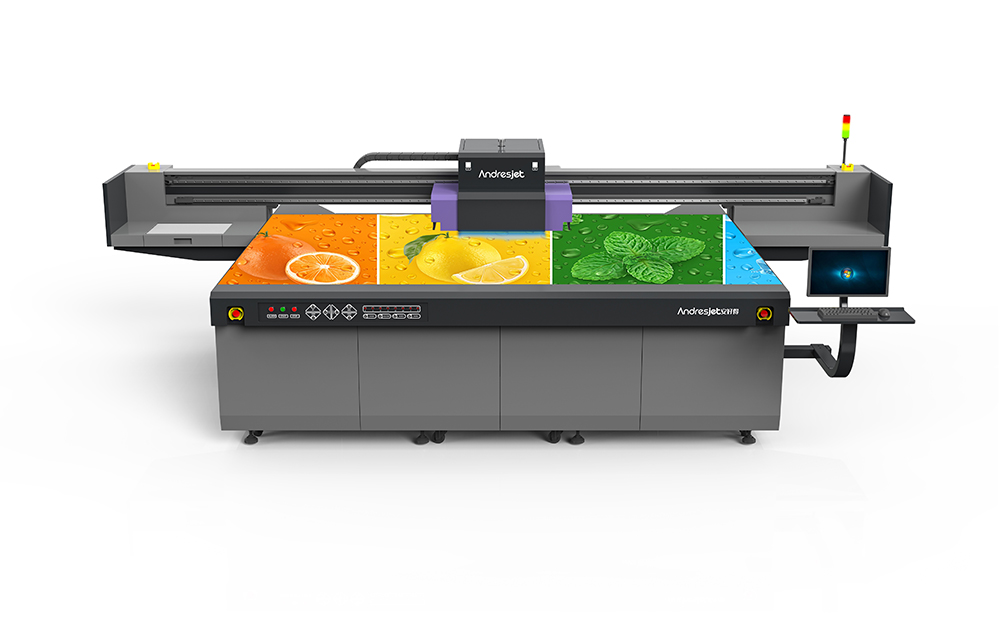UV Flatbed Printer: The Role of Printheads in the Printing Process
UV Flatbed Printer: The Role of Printheads in the Printing Process
In the realm of digital printing, UV flatbed printers have emerged as a versatile and efficient solution for a wide array of applications, ranging from signage and advertising to industrial manufacturing and personalized product decoration. These printers are capable of producing high-quality prints on various materials, including plastics, glass, metal, and even some textiles, thanks to their ability to cure ink instantly using ultraviolet (UV) light. One of the key components that contribute to the exceptional performance of UV flatbed printers is the printhead. This article delves into the crucial role that printheads play in the printing process, exploring their function, types, maintenance, and advancements that have shaped the industry.

Understanding Printheads
Printheads are the heart of any digital printing system, including UV flatbed printers. They are responsible for depositing ink onto the substrate in a precise and controlled manner, dictating the overall print quality, speed, and resolution. Essentially, a printhead consists of an array of nozzles that eject tiny droplets of ink onto the material being printed. The precision and speed of these nozzles determine the sharpness and detail of the final print.
Types of Printheads
UV flatbed printers utilize different types of printheads, each designed to cater to specific printing requirements. The two most common types are piezoelectric and thermal printheads.
Piezoelectric Printheads: These printheads use piezoelectric crystals to create pressure waves that force ink droplets out of the nozzles. Piezoelectric printheads are known for their high precision and durability, making them suitable for applications that demand fine detail and consistent print quality over long periods.
Thermal Printheads: In contrast, thermal printheads rely on heat to vaporize a small portion of the ink, creating a bubble that pushes the ink out of the nozzle. While they may not offer the same level of precision as piezoelectric printheads, they are generally more cost-effective and find widespread use in applications where print quality requirements are less stringent.
The Role of Printheads in UV Flatbed Printing
Ink Deposition: The primary function of printheads in UV flatbed printers is to deposit ink accurately onto the substrate. This requires precise control over the ink droplet size, ejection speed, and placement, all of which contribute to the overall print resolution and image quality.
Print Speed and Efficiency: Modern UV flatbed printers are capable of producing prints at remarkable speeds, often attributed to the efficiency of their printheads. High-speed printheads can eject ink droplets rapidly, reducing print time and increasing productivity.
Ink Curing: UV flatbed printers cure ink instantly using UV light. The printhead’s design and ink compatibility play a crucial role in ensuring that the ink can be effectively cured, leading to durable and long-lasting prints.
Versatility: Printheads must be compatible with a wide range of inks, including UV-curable inks, to accommodate different printing applications and substrates. This versatility allows UV flatbed printers to be used in various industries.
Maintenance and Lifespan
Proper maintenance of printheads is essential to ensure consistent print quality and extend their lifespan. This includes regular cleaning to prevent ink clogs, using manufacturer-recommended inks to avoid corrosion, and storing printheads correctly when not in use. Neglecting maintenance can lead to printhead failure, resulting in downtime and increased operational costs.
Advancements in Printhead Technology
The evolution of printhead technology has significantly impacted the UV flatbed printing industry, driving innovation and improving print capabilities.
Increased Resolution: Advancements in printhead design have led to higher print resolutions, enabling the production of intricate details and sharper images.
Faster Printing Speeds: Manufacturers continue to develop printheads that can eject ink droplets at faster rates, reducing print times and increasing overall efficiency.
Longevity and Durability: Improved materials and manufacturing processes have resulted in printheads with longer lifespans and better resistance to wear and tear.
Variable Dot Technology: Some modern printheads feature variable dot technology, allowing for the adjustment of ink droplet size during the printing process. This flexibility enables printers to achieve optimal print quality on different substrates and for various applications.
Conclusion
In conclusion, printheads are a vital component of UV flatbed printers, playing a pivotal role in the printing process. Their precision, speed, and compatibility with UV-curable inks contribute to the high-quality prints that UV flatbed printers are known for. As technology continues to advance, printheads will further evolve, enabling even greater print capabilities and pushing the boundaries of digital printing. Understanding the intricacies of printheads and their maintenance is crucial for anyone involved in the UV flatbed printing industry, as it directly impacts print quality, efficiency, and operational costs. With continued innovation in printhead technology, the future of UV flatbed printing looks promising, offering endless possibilities for creative expression and industrial applications.
